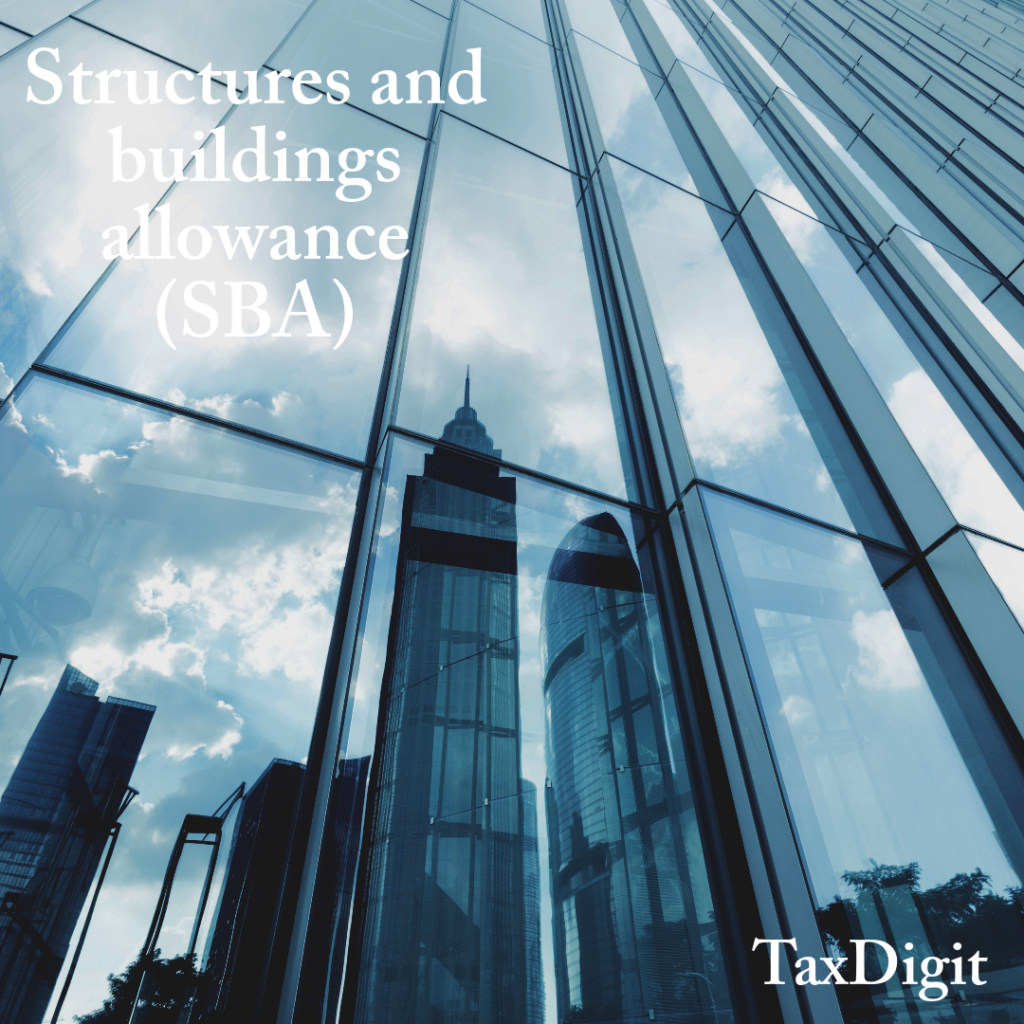
In the ever-evolving landscape of tax regulations, it’s crucial for businesses and property owners to stay informed about potential avenues for savings. One such avenue is the Structures and Buildings Allowance (SBA), a valuable benefit introduced for qualifying expenditures incurred on or after 29 October 2018. This allowance has undergone changes, and as of April 2020, it stands at 3% of the cost on a straight-line basis for an extended period of 33 1/3 years.
Key Points at a Glance:
- Rate Increase and Retroactive Claims: The SBA rate increased from 2% to 3% in April 2020. Importantly, those eligible can claim an additional 1% allowance to cover the period between 29 October 2018 and 31 March 2020 or 5 April 2020, depending on the tax type.
- Qualifying Criteria: To claim the SBA, the building or structure must be used in a qualifying activity. The claimant must also have an interest (freehold or leasehold) in the land where the asset is constructed.
- Timing of Relief: Relief is available from the time the structure or building is first used for a qualifying activity. For accounting periods less than a year, the allowance is reduced proportionally.
- No Balancing Adjustments: Unlike some capital allowances, there are no balancing adjustments on sale, providing a stable and predictable element to tax planning.
- Claim Process: As with other capital allowances, a claim for the SBA must be made in the tax return.
Claiming the Extra 1% Allowance Pre-April 2020:
An additional 1% SBA can be claimed by those entitled to an allowance on 31 March 2020 (Corporation Tax) or 5 April 2020 (Income Tax), subject to specific conditions and transitional rules.
Qualifying Expenditure:
Expenditure that qualifies for the SBA includes capital spending on renovations, conversions of existing commercial structures, repairs incidental to renovations, and construction costs for new properties. Claims are restricted to the lower of the actual expenditure, market value, or other specified conditions.
Qualifying Activities:
SBA applies to capital expenditure on structures and buildings used for qualifying activities such as a trade, profession, vocation, or a UK or overseas property business (excluding Furnished Holiday Let businesses).
Leasehold Property and Other Considerations:
The application of SBA to leasehold property depends on the length of the lease. Expenditure that qualifies for other capital allowances cannot be claimed under the SBA.
Multiple Uses, Renovations, and Changes in Use:
Where a structure has multiple uses or undergoes renovations, appropriate proportions of expenditure qualify for relief. Capital expenditure after the building enters into use qualifies for a separate allowance.
Disposal and Allowance Statement:
When a qualifying asset is sold, the new owner can claim the allowance if it is used for a qualifying activity. An allowance statement, containing specific information, must be provided by the first owner to enable future owners to claim allowances.
Anti-Avoidance Rules:
To ensure relief is granted only for genuine business costs on actual construction works, anti-avoidance rules deny or restrict relief in certain circumstances.
For more detailed information and personalised guidance on how the Structures and Buildings Allowance can benefit your specific situation, contact TaxDigit. Our experts are well-versed in navigating the complexities of tax regulations and can help you maximise your savings.



